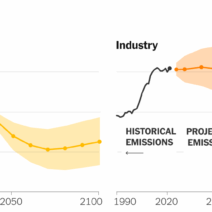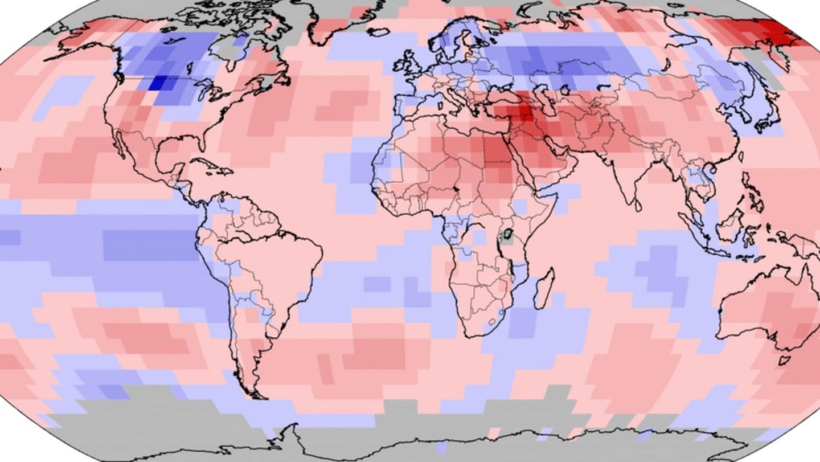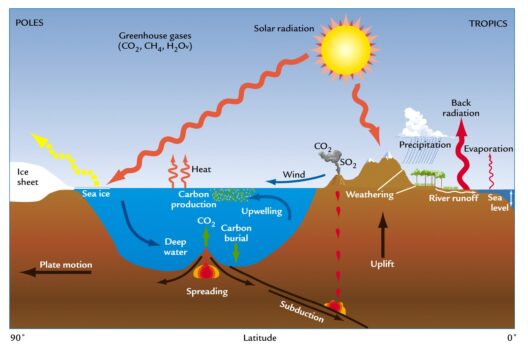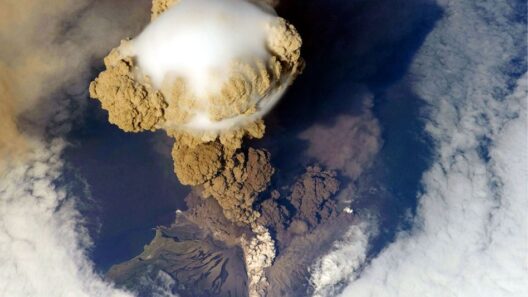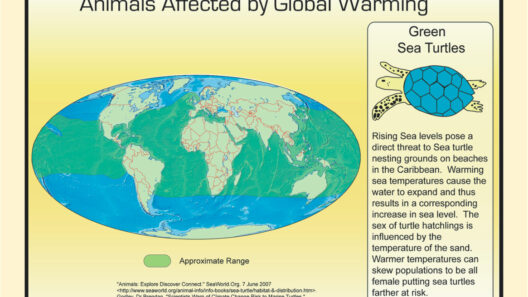The 20th century is often regarded as a pivotal era in the context of global climate dynamics, marking a pronounced shift in temperature patterns that have laid the groundwork for our current understanding of climate change. As we delve into the multifarious aspects of observed global warming during this century, an intriguing question arises: how well do we truly comprehend the extent and implications of these temperature anomalies? This inquiry not only invites reflection but also presents challenges to our interpretations and actionable responses to climate change.
The 20th century was characterized by a notable increase in mean global temperatures, with a discernible warming trend emerging by the mid-century. The Intergovernmental Panel on Climate Change (IPCC) posits that this warming is inextricably linked to a confluence of anthropogenic factors, chiefly the surge in greenhouse gas emissions stemming from industrialization, deforestation, and fossil fuel combustion. However, to grasp this phenomenon fully, one must examine the methodologies employed in measuring temperature fluctuations throughout the century.
Historically, temperature measurements began in earnest in the 19th century, utilizing a network of land-based weather stations strategically positioned across continents. This extensive data collection, predominant in urban locales, often inadvertently captured localized warming due to the urban heat island effect. The reliable representation of rural versus urban climates necessitated the establishment of a more comprehensive measurement system, aiding scientists in discerning global trends from artificially induced regional changes.
As the century progressed, the advent of satellite technology signaled a transformative leap in climatic measurement. By the latter part of the 20th century, the introduction of satellite-based remote sensing technologies facilitated a more uniform assessment of Earth’s temperature. These instruments could measure sea surface temperatures, atmospheric conditions, and ice cover, providing a holistic view of the planet’s climatic state. This technological evolution underscores the dynamic interplay between scientific inquiry and advancements in measurement techniques.
The empirical evidence from the 20th century clearly illustrates a significant rise in global temperatures, with anomalies becoming increasingly pronounced toward its conclusion. Between 1900 and 2000, global average surface temperature increased by approximately 0.6 degrees Celsius, an upward trajectory that entails far-reaching consequences for ecological systems and human livelihoods. However, beneath this overarching trend lies a tapestry of fluctuations that invites scrutiny.
Various climatic phenomena contributed to short-term temperature variability, including volcanic eruptions, which can induce temporary cooling effects, and El Niño and La Niña events, which dramatically influence global weather patterns. These natural oscillations create a complex interplay with anthropogenic warming trends, complicating the task of attributing specific temperature changes to human activity versus natural variability. Hence, attributing observed warming solely to human actions can be a formidable challenge.
To further illuminate the intricacies of this issue, one might ponder: if natural variability can significantly impact temperatures, could it also pose challenges to our mitigation efforts? This question is paramount as we strive to address the urgent need for climate action. The unexpected variabilities necessitate an adaptive approach to climate policy and environmental management, encouraging resilience in both ecological and human systems.
Moreover, the social implications of the 20th century’s warming trend cannot be understated. The agricultural sector, for example, witnessed profound transformations as shifting climatic conditions altered growing seasons and crop yields. In many regions, increased temperatures have led to diminished agricultural productivity, precipitating food security concerns and socio-economic instability. This intersection of climate science and human impact exemplifies the multi-dimensional challenges posed by global warming.
In addition, the linked phenomenon of glacial retreat during the 20th century serves as another compelling indicator of the planet’s changing climate. Glaciers worldwide, particularly in polar regions, have experienced accelerated melting, contributing to rising sea levels and threatening coastal ecosystems and human settlements alike. The implications of this glacial retreat extend far beyond mere statistics; they encompass the displacement of communities, loss of biodiversity, and critical disruptions to freshwater supplies.
While the 20th century laid the groundwork for understanding climate change, the lessons gleaned from its warming trends must resonate as we navigate the 21st century. Moving forward, the commitment to rigorous climate science and data collection remains paramount. The use of adaptive management frameworks is essential, allowing for agile responses to the unpredictable nature of climate impacts and collaboration across disciplines all while engaging public consciousness about these pressing issues.
In conclusion, the narrative of the 20th century’s heatwave transcends mere numbers; it embodies the intricate interplay of natural and anthropogenic factors that shape our planet’s climate. As we strive to untangle these complexities, we are confronted with challenges that demand not only scientific acumen but also societal resolve. The path ahead necessitates a holistic understanding of climate systems, fostering innovative solutions adept at addressing the continuing evolution of global temperatures. Ultimately, how we respond to the lessons of the past will indelibly influence the climate trajectory of future generations.

